#Alaska san
Explore tagged Tumblr posts
Text


Vanguard Koshien
Manga and Anime scenes
From Chapter 34 and Episode 33
#cardfight vanguard manga#cardfight vanguard#cardfight!! vanguard#Cardfight!! Vanguard manga#Manga vs Anime#Aichi kun#aichi sendou#Naoki kun#naoki ishida#Misaki san#misaki tokura#Shingo kun#shingo sawatari#kourin tatsunagi#Kourin#Takuto tatsunagi#Takuto#Ren kun#Alaska san#ren suzugamori#Tetsu kun
16 notes
·
View notes
Text

Article
As he peered over a secluded cove off the coast of San Francisco, Gerry McChesney couldn’t believe the scene that was unfolding in front of him.
Fur seal pups �� hundreds of them — had taken over the inlet at the Farallon Islands National Wildlife Refuge and were bobbing on the surface of the water in a shiny, blubbery mass, likely hiding from great white sharks as they waited for their mothers to return from the sea to nurse. The sight wasn’t exactly unheard of — island biologists at Point Blue Conservation Science had first noticed the older seal pups using the cove as a covert hideout sometime last year, McChesney, a manager for the refuge, told SFGATE. But he was on the island one day in late October when biologist Jim Tietz delivered the news: The seals were back in full force, and in numbers they had never seen before.
McChesney decided to go take a look for himself.
“I was amazed to see them all piled in there, getting tossed around like they were in a washing machine,” he told SFGATE in an email, adding that he counted 440 in all. “They looked pretty content and like they were having a good ol’ time.”
The video McChesney captured was shared by the United States Fish and Wildlife Service on social media earlier this week, garnering thousands of comments on Instagram and Facebook, with users referring to the phenomenon as “seal pup daycare” and “nature’s mosh pit.”
To the biologists, it’s a sign of “a truly remarkable recovery.”
The rookery’s history
The Farallon Islands host one of just two fur seal rookeries south of Alaska (the other being San Miguel Island in Santa Barbara County) after the species was completely wiped out from the area in the early 19th century. There was extensive seal hunting between about 1810 and 1838... In the first few years of widespread hunting, he estimates that over 150,000 fur seals were slaughtered (“The rookery must have been huge,” he noted) and soon, no fur seals could be found at the islands at all.
But large-scale market hunting came to an end by the mid-19th century, he said. In 1911, the United States signed the Northern Fur Seal Treaty, banning the hunting of marine mammals at sea. The Marine Mammal Protection Act, which prohibits killing and disturbing animals including seals, was established in 1972, further aiding in the protection of the species. Two years later, 141 acres of the islands were designated the Farallon Wilderness and were closed to the public in an attempt to mitigate human disturbance so the seals could return and “breed unfettered,” McChesney said. Large breeding colonies still persisted on the Pribilof Islands, Alaska, and the Commander Islands off eastern Siberia, and in 1996, a female fur seal from a recovered colony on the Channel Islands made her way back to the Farallones, giving birth to the first fur seal pup there after more than 150 years of the species’ absence.
Since then, “the Farallon population has been growing rapidly,” McChesney said. Within 15 years, the local population had boomed to 476 individuals, Bay Nature reported in 2018. Initially, they clustered in one area on the west end of the islands — but now, they’re beginning to expand.

Pictured: A photo of a northern fur seal in Alaska.
A seal surge
Pupping season runs from June to August, with most of the seals born in July and remaining in the breeding colony for a few months before they are weaned, usually by the end of November. Then, the newly independent animals go out to sea on their own.
Farallon Island biologists from Point Blue Conservation Science have been documenting the population, and this year recorded 2,133 fur seals in total, including 1,276 pups, which McChesney called “the highest pup count yet.”
“Given that the entire colony can’t be seen, this was a minimal count and there were certainly many more,” he noted.
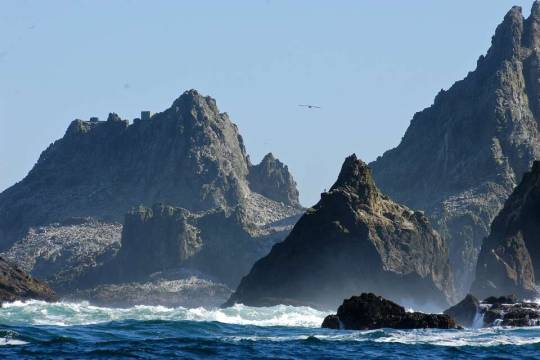
Pictured: The Farallon Islands off the coast of San Francisco.
Though Point Blue biologists have never documented white sharks feeding on fur seal pups (they typically go for juvenile northern elephant seals and sea lions) the “threat of shark attacks on the seal pups is certainly there and I’m sure the pups are aware of that,” McChesney said. “The cove where the video was taken provides a secluded spot to swim and play without worrying about the sharks.”
When the mothers return, they find their pups by using a distinctive call. But in the meantime, the pups seem not to mind the hours away in their secret hideout where they can splash and play to their hearts’ content.
“It was so much fun to watch,” McChesney said. “And knowing that the sight represents such an amazing comeback for their population made the sight mean so much more.”
-via SF Gate, December 23, 2024
#seals#fur seals#baby seals#marine life#baby animals#marine biology#california#san francisco#alaska#endangered species#wildlife conservation#united states#north america#good news#hope
2K notes
·
View notes
Text

I'm not sure I'm comfortable being compared to a popsicle stick...
Longfin Smelt (Spirinchus thaleichthys)
Pacific coast of North America from Alaska to California
Status: San Francisco Bay-Delta population is Endangered
---
The subpopulation of this fish was given protection in July of this year. I saw an article describing it as "the length of a popsicle stick".
#smelt#fish#freshwater fish#fish art#fishblr#2024 endangered species#conservation#north america#usa#canada#alaska#british columbia#washington#oregon#california#san francisco bay
17 notes
·
View notes
Text
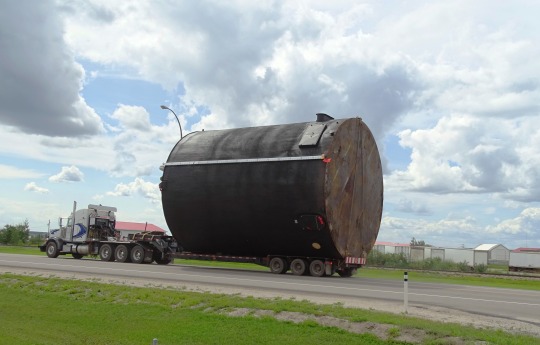






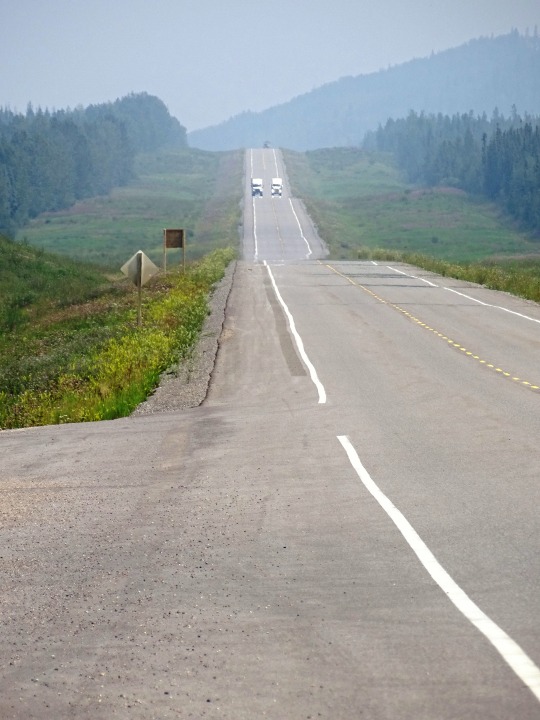


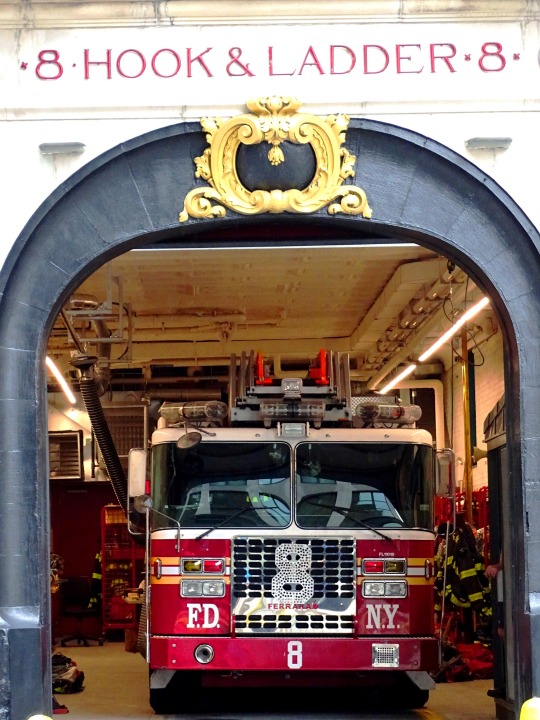






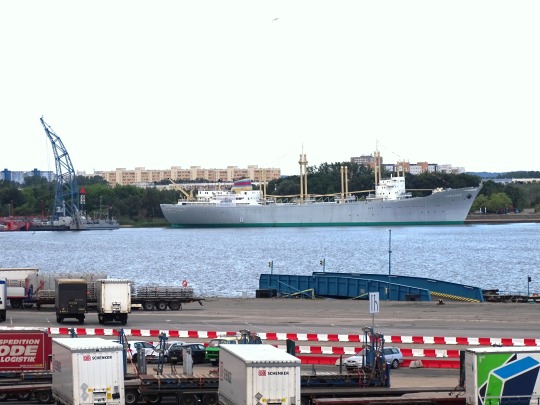


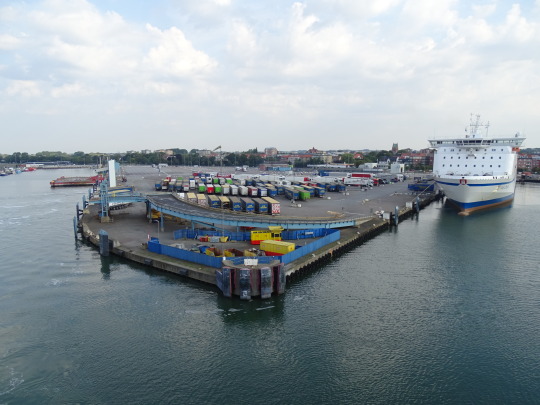







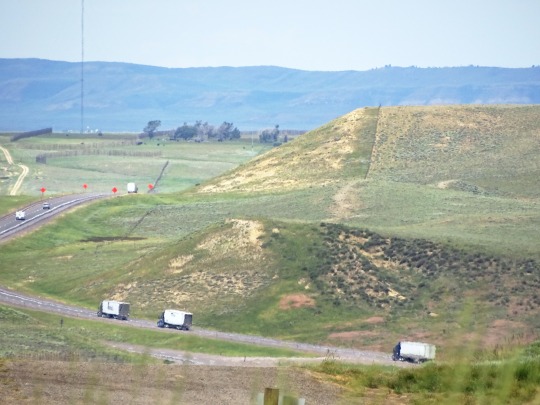
Truck Driver Day
Professional truck drivers are honored and celebrated today with Truck Driver Day. In the United States, a driver is considered to be a truck driver when their vehicle has a gross vehicle weight—the weight of the vehicle loaded—of at least 26,000 pounds. They must obtain a commercial driver's license (CDL) to drive a vehicle of this weight. Employers often require their drivers to take a safety training program, and some also require a high school degree or GED.
Truck drivers carry all kinds of freight—livestock, food, canned goods, liquids, packages, and vehicles—all across the United States and the world. They often have to load and unload their freight and must inspect their trucks before taking to the road. Truck drivers often ship products to stores, and some may have to undertake sales duties. Many truck drivers work long hours. Some may have daily local routes that keep them close to home, while others may have routes and schedules that often change, and many have to be away from home for an extended amount of time.
Some trucks were on the road in the United States prior to World War I. Trucks continued to be used and developed during the war, and by 1920 there were more than a million trucks on the roads of America. Trucking continued to expand over the following decade, on account of advancements such as the introduction of the diesel engine, improved rural roads, the introduction of power brakes and steering, and the standardization of truck and trailer sizes. In the 1930s, a number of trucking regulations were implemented, and the American Trucking Association was created. Trucking activity increased in the 1950s and '60s, in large part because of the creation of the Interstate Highway System. Regulations on the weight of trucks continued to be updated.
The heyday of the truck driver came in the 1960s and '70s. At the time, a wide swath of the public viewed truck drivers as modern-day cowboys or outlaws. The rise of "trucker culture" was signaled with the proliferation of trucker songs and films, the wearing of plaid shirts and trucker hats by the public, and the wide use of CB radios and CB slang. The romanticization of trucker culture subsided by the dawn of the 1980s.
Many truckers went on strike during the energy crises of 1973 and 1979, after the cost of fuel rose. The Motor Carrier Act of 1980 partially deregulated the industry. As a result, many new trucking companies were started. Trucker union membership also drastically declined, leading to lower pay. But the deregulation did reduce consumer costs, and it increased production and competition in the trucking industry. By the twenty-first century, trucking dominated the freight industry. In 2006, there were 26 million trucks on America's roads, which hauled about 70 percent of the country's freight. Truckers continue to play a prominent role in keeping the wheels of the economy turning, and for the hard work they put in to make this happen, they are honored and celebrated today!
How to Observe Truck Driver Day
Some ideas of ways the day could be spent include:
If you are a truck driver, get out there and drive! Or, take the day off. It should be up to you!
Wave to truckers or make a gesture like you are pulling a truck horn in an attempt to get them to honk their horns.
Thank a truck driver. Tell them thanks in person or make a social media post of thanks. Include the hashtag #TruckDriverDay.
Become a truck driver.
Listen to some truck driving songs such as "Convoy" and "Truck Drivin' Man."
Watch some truck driving films such as Smokey and the Bandit, Convoy, and Big Rig.
Talk on a CB radio.
Eat at a truck stop.
Attend or take part in the National Truck Driving Championships, which are held around the time as Truck Driver Day.
Read a book about trucking or truckers such as Trucking Country: The road to America's Wal-Mart Economy or The Long Haul: A Trucker's Tales of Life on the Road.
Explore the websites of organizations and companies related to the industry such as American Trucker, Truckers News, the Federal Motor Carrier Safety Administration, the American Trucking Associations, and the Women in Trucking Association.
#Hafen Rostock#MS Tom Swayer#Trelleborg Harbor#Alaska Highway#Yukon#British Columbia#Canada#Sweden#Germany#summer 2023#Truck Driver Day#TruckDriverDay#12 August#car#truck#streetscene#USA#original photography#I really love the first pic#Nevada#Manhattan#New York City#Sherman Summit#fire truck#Chicago#San Francisco#Echo Canyon#Utah#Wyoming#California
8 notes
·
View notes
Text
The Future of Digital Aesthetics: Insights from a Leading Web Design Company
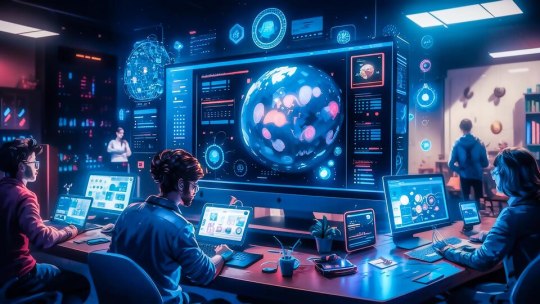
In the current era of extensive digital connectivity, a website serves as more than merely an online presence; it represents your brand's identity, acts as the initial interaction with prospective clients, and frequently plays a crucial role in customer engagement. the deciding factor in whether a user engages further with your business. As the digital landscape evolves, the role of a Leading Web Design Company in the USA becomes pivotal in shaping this transformation. These experts create digital experiences that captivate audiences, enhance usability, and drive success.
Why Website Design Matters More Than Ever
In the digital marketplace, first impressions are everything. Research indicates that individuals develop an impression of a website in just 50 milliseconds. A thoughtfully crafted website not only captures interest but also builds credibility and fosters trust. It communicates the brand’s ethos and facilitates seamless user interactions, ensuring visitors stay longer and engage deeper.
The Leading Web Design Company in the USA recognizes these critical elements. It integrates cutting-edge strategies to ensure that your website is not only visually stunning but also functionally superior.
Emerging Trends in Web Design
The web design landscape is dynamic, constantly adapting to technological advancements and user preferences. Here are some trends shaping the future of digital aesthetics:
1. Minimalistic Design with Purpose
Less is more. Minimalism in design helps declutter websites, focusing on what truly matters—content and functionality. Leading web designers in the USA are perfecting the art of combining simplicity with impactful visuals.
2. Dark Mode and High-Contrast UI
Dark mode has become increasingly popular due to its aesthetic appeal and user comfort. It alleviates eye fatigue and provides websites with a stylish, contemporary appearance.
3. AI-Driven Personalization
Artificial intelligence is revolutionizing web design. AI tools analyze user behaviour to offer personalized experiences, making interactions more intuitive and effective.
4. Immersive 3D Elements
Three-dimensional visuals add depth and interactivity to websites, providing an engaging experience. From product displays to virtual tours, 3D elements bring a new dimension to design.
5. Voice-Activated Interfaces
With the rise of voice assistants like Siri and Alexa, websites are beginning to incorporate voice-activated interfaces to make navigation even more user-friendly.
6. Accessibility and Inclusive Design
Inclusive design guarantees that websites are usable by everyone, including individuals with disabilities. This approach is not just ethical but also expands the reach of businesses.
Key Features of a Well-Designed Website
To ensure your website stands out, a Leading Web Design Company in the USA focuses on these essential elements:
Responsive Design: A website must perform seamlessly across all devices—desktops, tablets, and smartphones.
Fast Loading Speeds: Users expect a site to load within two seconds; anything longer can lead to lost opportunities.
User-Friendly Navigation: Intuitive menus and logical layouts guide users effortlessly through your website.
SEO-Optimized Content: High-quality content integrated with strategic keywords ensures visibility on search engines.
Engaging Visuals: High-resolution images, videos, and animations captivate users and convey messages effectively.
Secure and Reliable: Robust security measures protect user data, fostering trust and confidence.
The Role of Creativity and Strategy in Web Design
Creativity is the lifeblood of web design, but strategy ensures that creativity serves a purpose. A Leading Web Design Company in the USA combines these two elements to create designs that are not just visually appealing but also strategically aligned with business goals.
Understanding the Brand
Each business has its own distinct characteristics, and its website ought to showcase this uniqueness. Web designers delve deep into understanding a brand’s identity, audience, and objectives before crafting the design.
Data-Driven Decisions
Modern web design relies heavily on analytics. User behaviour data helps identify areas of improvement, ensuring that the website evolves with user needs.
Focus on Conversion
Ultimately, a website should drive results. Whether it’s generating leads, making sales, or increasing engagement, the design should be optimized for conversions.
Why Choose a Leading Web Design Company in the USA?
The USA is home to some of the most innovative and talented web design professionals in the world. These companies set the benchmark for global web design standards by combining technical expertise with creative excellence.
Unmatched Expertise
Web designers in the USA are equipped with the latest tools and technologies to deliver world-class designs.
Tailored Solutions
Rather than adopting a one-size-fits-all approach, the Leading Web Design Company in the USA offers customized solutions that cater to the unique needs of businesses.
Ongoing Support
A great website is not a one-time project. Ongoing updates, maintenance, and support ensure that your digital presence remains relevant and effective.
Preparing for the Future of Web Design
As technology progresses, the future of web design presents thrilling opportunities. From augmented reality (AR) integration to blockchain-secured websites, the next decade will witness groundbreaking innovations. Collaborating with a Leading Web Design Company in the USA ensures that your business stays ahead of the curve, leveraging these advancements to build a digital presence that stands out.
Conclusion
In the competitive digital landscape, having a cutting-edge website is no longer optional—it’s a necessity. Partnering with a Leading Web Design Company in the USA guarantees that your business receives a website that is not just aesthetically pleasing but also strategically designed to achieve your goals.
Invest in your digital future today. Embrace the expertise of the USA’s top web designers and create a website that resonates, engages, and converts. The future of digital aesthetics is here—are you ready to be a part of it?
#Leading Web Design Company in USA#Web Design Company#website development#web design#web developing company#UI/UX Design Company in USA#digital marketing#advertising#branding#ecommerce#united states#USA#new york#washington dc#Alaska#Arizona#California#florida#Georgia#Hawaii#Indiana#los angeles#san francisco
2 notes
·
View notes
Photo
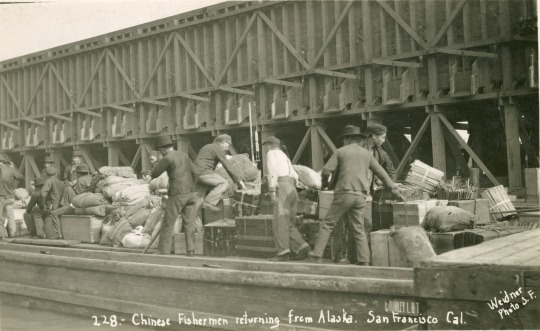
This 1904 image of Chinese fishermen on a dock, having returned from Alaska to San Francisco, helps to illustrate Chinese workers’ huge role in the cannery business at the time. Chinese immigrants have a long history in Alaska; many Chinese immigrants built railroads, worked in mines, and played a large role in the cannery industry. Alaska’s wild salmon industry was turned into today’s international, multi-billion-dollar business by immigrants. Chinese immigrants were the first to take over salmon cannery work, and were followed by Japanese workers, who were then followed by Filipino workers, according to San Francisco Maritime’s Park Curator.
#Chinese History#Alaska#California#San Francisco#1900s#AANHPI Month#AANHPI#AAPI Month#AAPI#Libraries#Librarian
24 notes
·
View notes
Text
Almost Nothing Is Worth a War Between the U.S. 🇺🇸 and China 🇨🇳
Americans and Chinese have to rehumanize each other in terms of the way we conceive of our problems and engage.
— By Howard W. French | Foreign Policy | August 21, 2023

A child sitting on a man's shoulder takes a picture as she visits the Bund waterfront area in Shanghai, China, on July 5, 2023. Wang Zhao/AFP Via Getty Images
Midway into my just-completed one-month stay in China, I found myself seated alone in a tasteful restaurant in an upscale shopping mall in Shanghai, where I had gone for dinner.
There, amid dim lighting and soft traditional music, I had a kind of revelation. Bear with me. Against the opposite wall sat a three-generation Chinese family dining together. Two grandparents, slouching a bit, their visages deeply lined, faced in my direction, and seemed to exhibit mild curiosity about what has become a rare sighting recently, even in China’s most cosmopolitan city: a foreigner. They watched closely as I spoke with the waiter in Chinese to complete my order.
Two other people—from all evidence their much taller daughter, who was dressed in the refined way of a well-paid professional, and a small grandchild—sat with their backs to me. I was only able to see their faces when the mother stood up mid-meal to take her girl to the bathroom. In this little glimpse of three generations, an entire world opened up for me, as did a deep sense of alarm over one of the most urgent problems facing all of humanity in these times.
As a former longtime resident of China and someone who has been studying the country since I was a college student many decades ago, I could not prevent myself from trying to imagine the run of experiences the two elders had lived through. I guessed they were roughly my age, meaning in their 60s, but they looked a lot older and more worn than your average well-kept American of similar age.
This meant they would probably have harsh memories of the Cultural Revolution, the decade of political violence and upheaval that began under Mao Zedong in 1966. They or their families may also have suffered even worse tribulations late in the previous decade during the “Great Leap Forward,” when Mao’s crash effort to industrialize resulted in tens of millions of Chinese people starving to death.
Now, the elderly looking man who gazed across the narrow space separating us wore a light blue Gap t-shirt as he picked his way gingerly through a three-course meal, seemingly taking his time to chew. What did he understand of the symbolism of mass consumerism represented in the white logo emblazoned on his shirt? What did he make of the proliferation of this temple of marketing and surplus that is the shopping mall, a cultural phenomenon that contemporary China has made its own? How did he feel about the long curve of his life? Of the grave errors that China had made, but also about where it had ended up, or at least where it stood in this moment? I almost wanted to ask him, but thinking it would have been too much of an intrusion, I restrained myself, with regret.
In those moments, these thoughts impelled me to think about the curve of life in my own country, the United States, too—of how easily one can assume a kind of superior or even triumphalist attitude toward other people in other places. I had just missed being of draft age in the Vietnam War, a senseless tragedy visited upon tens of millions of Southeast Asians, for reasons as specious as many of Mao’s economic and political ideas. I thought of the persistent denial of civil rights for African Americans, which continued in a de jure sense almost into my teenage years. I thought of the devastation to the planet caused by America’s heedless crusade for wealth. Then, based on the evidence, I concluded that bad decisions and human folly are, well, universally human.
The biggest human folly I can presently think of, though, would be something that nowadays seems frighteningly easy to imagine: a war between the United States and China. Until the coronavirus pandemic, I had either lived in or visited China every year since the late 1990s. I plan to write several columns based on my recent return to the country after four years of pandemic-enforced absence. But this is not yet the occasion for a deep exploration for the political, economic, and strategic issues that are pushing to the two countries so far apart and fueling ever greater risk of catastrophe.
I’ll just say here that this is not a situation where, as so many in each country may be inclined to think, if only the other side would stop doing things that threaten or provoke us, the war clouds would dissipate. We have problems together, and if they are to be prevented from causing mass death and destruction, both countries will have to escape the endless loop of reflexively problematizing and sometimes essentializing the other, along with the relentless self-justification.
Many will think me naive, but this has to begin with something all too rare. Americans and Chinese have to rehumanize each other in terms of the way we conceive of our problems and engage. Actually, seeing people in China, like that family across from me at dinner, helped bring this home. But how can this be achieved for the crushing majority of Americans and Chinese who will never visit the other’s country? How can we strip off the layers of surface things that separate us to get in touch with the profound humanity that should unite us? It’s hard work, and the answer is not obvious, but it is urgent.
Since I’m ready to be accused of naivete, I’ll try to start first. There is almost nothing that is worth a war between the United States and China. I’ll come back to the tricky sounding “almost” in a second—it’s actually not as big of an asterisk as some might imagine. Control over Taiwan, which the government of Chinese President Xi Jinping has made into an all-too-public obsession, is not worth the killing that would be unleashed by a Chinese invasion and by any U.S. response in defense of that island. Continued U.S. geopolitical preeminence in the world is also not worth a major armed conflict with China. This is not a call for capitulation, but rather for both countries to find ways to prioritize coexistence and avoid disaster.
As a non-academic historian, I read an inordinate amount about the past, and I have always been struck by the airs of overconfidence and intoxication that have preceded many great past conflicts. On the eve of World War I, for example, elites on both sides—in Germany and Britain—were blithely predicting the troops would be home by Christmas.
Most Americans (and most Chinese) probably spend precious little time thinking about what war would do to their own country. It would be useful to give a wider airing of war game scenarios, such as one carried out recently by the Center for Strategic and International Studies, that make clear just how devastating a conflict could be. In this example, just one of many, Hawaii, Guam, Alaska, and San Diego, California, would all come under withering Chinese attack, up to and potentially including with nuclear weapons. Lest Chinese people think that they would have little to fear by way of direct impact, just for starters, many areas of coastal China, where the country’s population and wealth are heavily concentrated, could face a rain of U.S. missiles.
What are people willing to concede in order to avoid such a fate? In a book I wrote about China’s conception of itself as a great power, I concluded that the United States needed, for starters, to signal a lot more serenity in its competition with China. For at least two decades, my country has behaved as if a bit haunted by the prospect of being overtaken. But for objective reasons—including China’s extraordinarily profound demographic problems, the declining effectiveness of China’s economic policies, and a plethora of domestic challenges in the country—the United States needn’t be. What is more, though, is that the signals of American anxiety, which are rife in the political culture and come through in many U.S. policies, fuel Chinese nervousness, insecurity, and over-assertiveness.
China, for its part, needs to get over its own insecurities. The air of self-confidence it seeks to project is powerfully belied by the constant resort to overt nationalism and to assertions that in its dealings with other countries—or with international bodies like international tribunals governing laws of the sea, for example—only others are capable of incorrect positions. China, by contrast, is not only always right but also righteous.
Beijing is profoundly worried about the staying power of its own political system, but it needn’t obsess, as it claims to, over the supposed efforts of others to undermine it. Whatever threats there are to China’s system of rule come from within China itself. Nobody outside of the country, in other words, is trying to bring down the Communist Party. Only the party itself can achieve this, by failing to reform in step with the desires of the country’s own population.
So how can we restore some confidence on both sides? First the asterisk from above. War should be ruled out except in the case of a direct attack by one side on the other, which means we should rule out attacking each other. China should meanwhile also lower the temperature on Taiwan, in tandem with more reassurances from the United States that Washington does not support the idea of formal independence for the island.
Chinese and American leaders also have to start speaking with each other and meeting much more often face to face. There is really no substitute for this, for as much as what were once called people-to-people exchanges can reinforce a shared sense of humanity, seeing political leaders shake hands and smile and meet across the table to discuss thorny issues separating the two sides can also remind both countries’ public and political classes that there is nothing so hard that it can’t be talked about.
— Howard W. French is a Columnist at Foreign Policy, a Professor at the Columbia University Graduate School of Journalism, and a longtime Foreign Correspondent. His latest book is Born in Blackness: Africa, Africans and the Making of the Modern World, 1471 to the Second World War.
#Foreign Policy#China 🇨🇳 | United States 🇺🇸#Worthless War#Howard W. French#Argument#Cultural Revolution#Vietnam War#Mao’s Economic and Political Ideas#Political | Economic | Strategic Issues#Taiwan 🇹🇼#Hawaii | Guam 🇬🇺 | Alaska | San Diego#Beijing | Washington
13 notes
·
View notes
Text
I redecorated my bag after getting rid of all the ants. It's so blue hair and pronouns core now 🐟
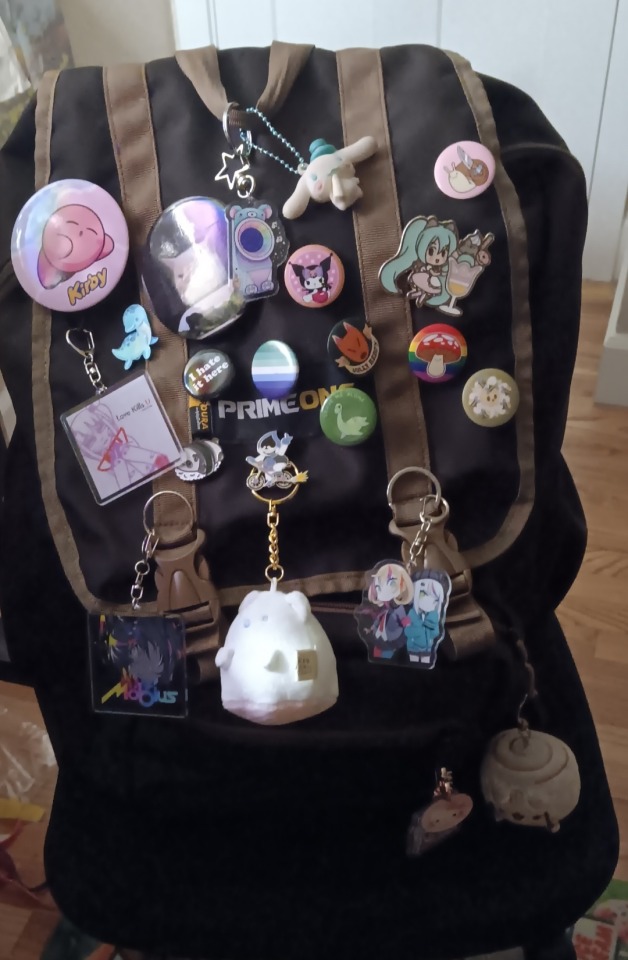
#i dont think i talked about the ant infestation on here actually#im p sure all the ants are gone now tho so thats good#ill put where i got all my pins/keychains here in case anyone wants to know#all the pins except the Lancer Miku and gay mlm ones are from hot topic#the Lancer is from Fangamer (official Deltarune merch#the Miku one is a pusheen colab pin which you can actually find at hot topic (thats where i got it) but its also online#(im p sure the official pusheen store and amazon has it)#the gay mlm one is just a generic one i got at an art store#the bear Wacca arcade machine keychain was made by MooshiKaik on etsy#the san x ghost bear (forgor its name 💀) i got at hot topic but i think its at other places too#the Cinnamoroll keychain was from a random small store in alaska that i dint remember the name of#it came with nail clippers too lol#the cinnamon roll Pusheen in the bottom right corner came from a blind box that can be found on the Pusheen store and at some other stores#the milk keychain at the bottom that can barely be seen is made by Kiwihen#(idk what platforms they sell their stuff because i got this at the store uwajimaya)#the hello kitty keychain blocking it was from a friend so idk where its from#and the rest of my Wacca keychains are bootlegs from AliExpress because the official store is only in japan/asia#i forgor what the official store for them is called but theres also some other online stores that sell them#(only in japan/other asia countries tho ]: )#ok thats all of them idk why i did all of that only like 4 people will see this lol#bag
6 notes
·
View notes
Text
Acer Nitro 5 AN515-58-57Y8 Gaming Laptop | Intel Core i5-12500H | NVIDIA GeForce RTX 3050 Ti Laptop GPU | 15.6" FHD 144Hz IPS Display | 16GB DDR4 | 512GB Gen 4 SSD | Killer Wi-Fi 6 | Backlit Keyboard


Brand: acer
Model Name: AN515-58-57Y8
Screen Size: 15.6 Inches
Color: Black
Hard Disk Size: 512 GB
CPU Model: Core i5
Ram Memory Installed Size: 16 GB
Operating System: Widows 11 Home
Special Feature: Backlit Keyboard
Graphics Card Description: Dedicate
#Alabama#Alaska#Arizona#Arkansas#California#Colorado#Connecticut#Delaware#Florida#Georgia#Hawaii#Indiana#indianapolis#san francisco#ohio#chicago#West Virginia#new hampshire#hipstamatic#utah#parks#appalachia
6 notes
·
View notes
Text

Nacho Canut & Alaska.
San Sebastián, 1981
4 notes
·
View notes
Text
imma need everyone posting job listings with no salary range and no benefits to drop dead with the swiftness i hate you all so much
#it is so personal fhsjdhdj#them like we need someone who is motivated flexible energetic understands cultural differences-#BITCH WHAT IS IN IT FOR ME#or they have their extensive list of requirements and its like $18/hr in san francisco or some shit#deadass saw a listing in alaska that was like $18/hr and the listing literally said 'no benefits'#what are yall smoking that you think someone is going to move to ALASKA for that much money and No Benefits
2 notes
·
View notes
Text

Traveling the Northern Passage
2 notes
·
View notes
Text
Weltreise - Crystal Serenity sticht 2027 zu den "Geschichten der Südsee" in See!
Das Schiff bereist den Pazifik auf 140-tägiger Weltreise! Crystal Cruises hat seine mit Spannung erwartete Weltkreuzfahrt 2027 an Bord der Crystal Serenity angekündigt. Das Thema: Die “Geschichten der Südsee” – entführen Passagiere auf eine 140-tägige Reise durch 29 Länder und vier Kontinente, mit 83 exotischen Zielen entlang des Pazifischen Ozeans. Von San Diego bis Vancouver: Ein Abenteuer…
#2027#Abercrombie & Kent#alaska#asien#australien#Crystal Cruises#Crystal Serenity#Französisch-Polynesien#Luxusreise#neuseeland#Pazifik#San Diego#südsee#Vancouver#Weltkreuzfahrt
0 notes
Video
youtube
"Balclutha". The last sailing vessel to go north for the Alaskan Packers...
0 notes
Text




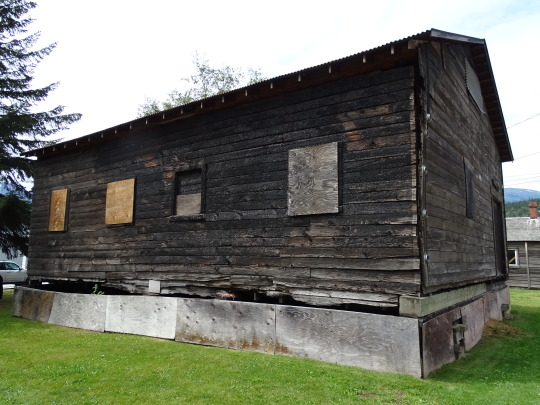









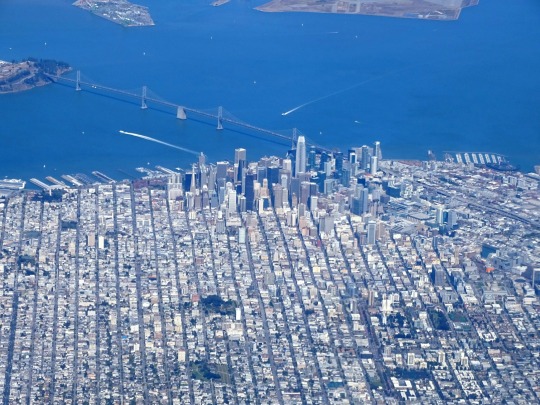


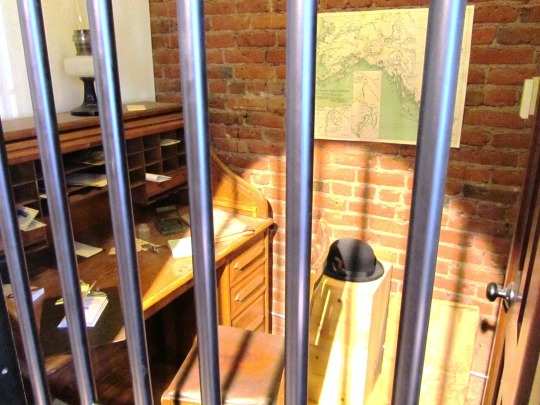
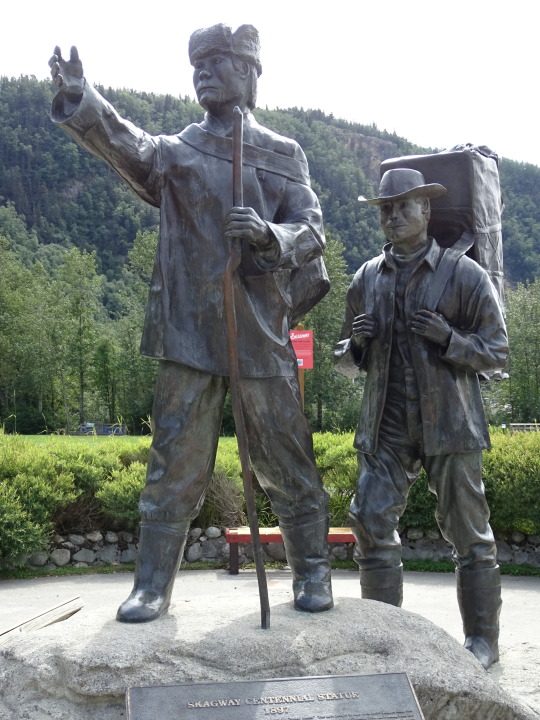
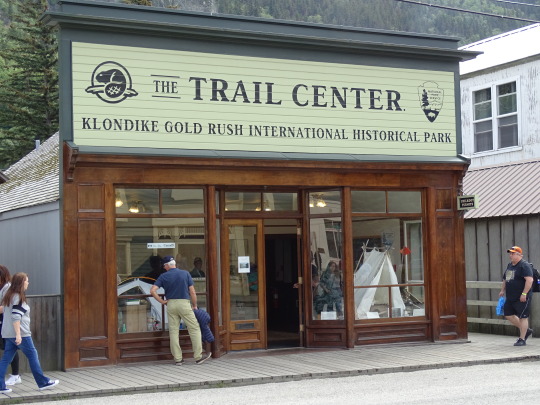



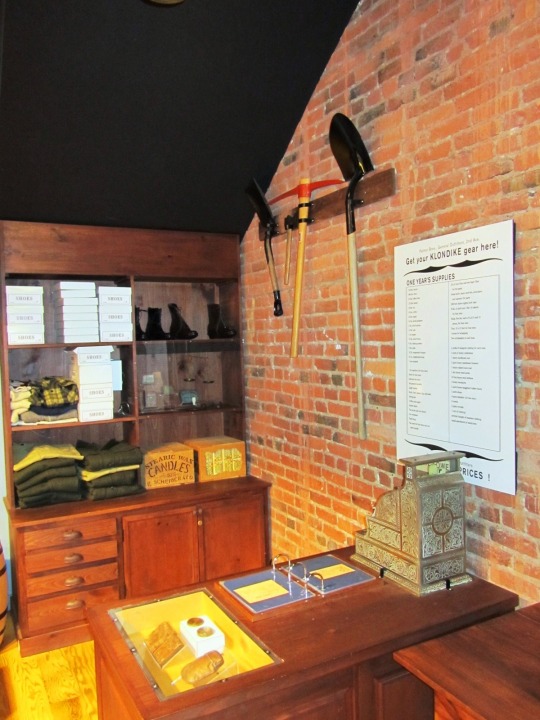




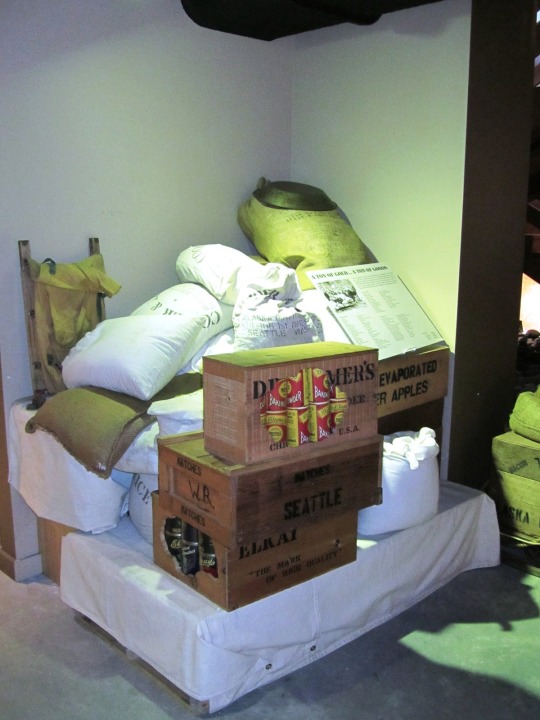
In the Klondike stampede, an estimated 100,000 people tried to reach the Klondike goldfields, of whom only around 30,000 to 40,000 eventually did. It formed the height of the Klondike gold rush from the summer of 1897 until the summer of 1898. It began on July 15, 1897 in San Francisco and was spurred further two days later in Seattle, when the first of the early prospectors returned from the Klondike, bringing with them large amounts of gold on the ships Excelsior and Portland.
#Prospector and his dog by Chuck Buchanan#Whitehorse#Yukon#Canada#summer 2023#Skagway#Alaska#Gold Rush Mural by Lance Burton#S.S. Klondike National Historic Site#Stampeder Statue by Peter Lucchetti#Skagway Centennial Statue by Chuck Buchanan#Moore House#Klondike gold rush#15 July 1897#started#USA#summer 2012#San Francisco Maritime National Historical Park#2022#travel#original photography#vacation#tourist attraction#landmark#cityscape#architecture#Klondike Gold Rush - Seattle Unit National Historical Park#Pacific Ocean#California#anniversary
1 note
·
View note
Text
2024 San Francisco Giants Famous Relations
#45 Kyle Harrison: Grandson of former San José Bees P Drannon Guinn. #33 Taylor Rogers: Brother of giants P Tyler Rogers. #71 Tyler Rogers: Brother of giants P Taylor Rogers. #16 Nick Ahmed: Nephew of University Of Rhode Island Rams baseball head coach Raphael Cerrato & brother of former Arkansas Travelers 3B Michael Ahmed. #49 Tyler Fitzgerald: Son of former Springfield Cardinals 1B Mike Fitzgerald. #8 Michael Conforto: Son of former olympic swimmer Tracie Ruiz-Conforto. #13 Austin Slater: Grandson of former Jacksonville, Florida mayor T. Ed Austin; Jr.. #5 Mike Yastrzemski: Grandson of former Boston Red Sox LF Carl Yastrzemski. #43 Tristan Beck: Brother of Hudson Valley Renegades P Brendan Beck. Bullpen coach Garvin Alston: Cousin of former Azules De Coatzacoalcos LF Dell Alston & father of Harrisburg Senators P Garvin Alston; Jr.. 3B coach Matt Williams: Grandson of former Paducah Indians LF the late Bartholomew Griffith, ex-husband of actress Michelle Johnson & husband of news anchor Erika Williams.
#Sports#Baseball#MLB#San Francisco Giants#Celebrities#MiLB#Missouri#Colorado#Massachusetts#Rhode Island#Arkansas Travelers#Illinois#Springfield Cardinals#Georgia#Washington#National Teams#Hawaii#Florida#Politics#Virginia#Boston Red Sox#New York#Hudson Valley Renegades#Mexico#Harrisburg Senators#Arizona#Kentucky#Movies#TV Shows#Alaska
0 notes